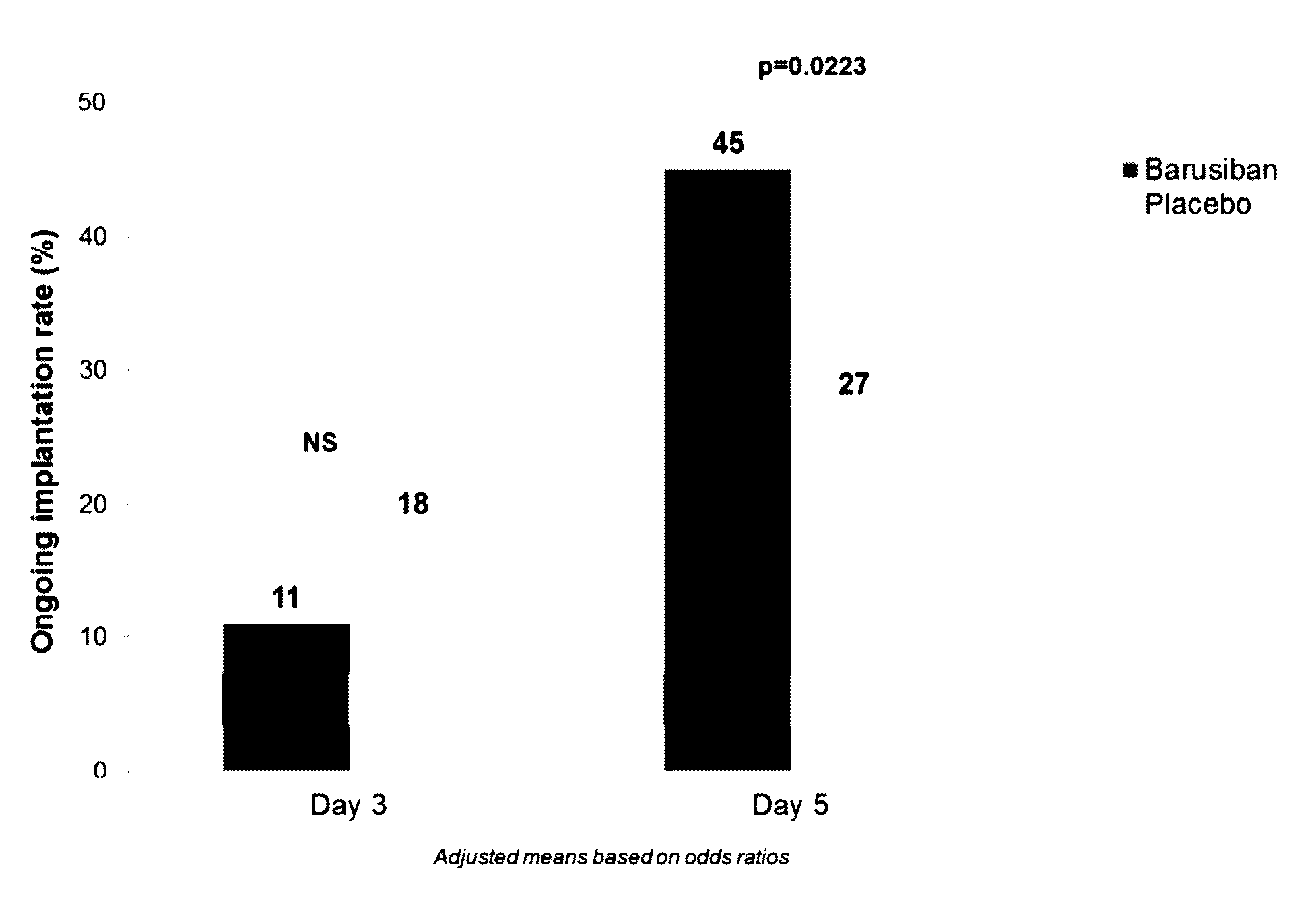Oxytocin receptor antagonist therapy in the luteal phase for implantation and pregnancy in women undergoing assisted reproductive technologies
a technology of oxytocin receptor and luteal phase, which is applied in the direction of drug composition, sexual disorder, peptide/protein ingredients, etc., can solve the problems of improving the implantation of transferred embryos, and achieve the effects of increasing clinical pregnancy rate, increasing ongoing implantation rate, and increasing clinical pregnancy ra
- Summary
- Abstract
- Description
- Claims
- Application Information
AI Technical Summary
Benefits of technology
Problems solved by technology
Method used
Image
Examples
example 1
A Randomized, Placebo-Controlled, Double-Blind, Parallel Groups, Multinational, Multicenter Trial Assessing the Effect of Barusiban Administered Subcutaneously on the Day of Transfer on Implantation and Pregnancy Rates in IVF / ICSI Patients
Methodology
[0124]BASIC was a randomized, double-blind, placebo-controlled, parallel groups, multinational, multicenter trial. It was designed to evaluate the effects of barusiban, administered either on the day of cleavage-stage embryo transfer or on the day of blastocyst transfer, on ongoing implantation rate in IVF / ICSI patients. The patients underwent controlled ovarian stimulation in the long GnRH agonist or GnRH antagonist protocol, received hCG for triggering of final follicular maturation, had undergone oocyte retrieval, and had daily luteal phase support by supplementation with vaginal progesterone starting on day 1 post-retrieval, and transfer on day 3 or 5 post-retrieval. Patients were randomized in a 1:1 ratio to either the barusiban gro...
PUM
| Property | Measurement | Unit |
|---|---|---|
| time | aaaaa | aaaaa |
| time | aaaaa | aaaaa |
| time | aaaaa | aaaaa |
Abstract
Description
Claims
Application Information
 Login to View More
Login to View More - R&D
- Intellectual Property
- Life Sciences
- Materials
- Tech Scout
- Unparalleled Data Quality
- Higher Quality Content
- 60% Fewer Hallucinations
Browse by: Latest US Patents, China's latest patents, Technical Efficacy Thesaurus, Application Domain, Technology Topic, Popular Technical Reports.
© 2025 PatSnap. All rights reserved.Legal|Privacy policy|Modern Slavery Act Transparency Statement|Sitemap|About US| Contact US: help@patsnap.com



